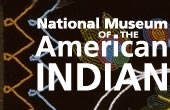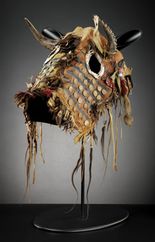Rippling muscle. Sleek black contrasting with tawny gold. Glances.
Prances. It's breeding time at the Nez Perce Tribe's Young Horseman
Project south of Lapwai and
filmmaker Janet Kern is there to capture close-up the courtship of
an Appaloosa with an Akhal-Teke. This is the opening montage for a
chapter of Kern's documentary, "Sik'em," about the Nez Perces'
effort to create a striking new breed while also resurrecting its
renowned reputation for horsemanship. Sik'em is the Nez Perce word
for horse. The new breed is called the Nimipu Sik'em (the Nez Perce
Horse). "I feel a tremendous responsibility to tell this story
accurately, thoroughly and beautifully," Kern says during a visit to
the reservation this week. "There's the drama of starting a business
and the story of young people and horses is compelling in any
instance. But then add the proud tradition of the Nez Perce. ...
It's a
hell of a story." The New York City filmmaker was in town
on her way to a sacred horse ceremony at the Bear Paw Battlefield in
Montana. Kern says was hooked on the idea for the documentary 1 1/2
years ago by an article in The New York Times headlined "Tribe
Famous for Horses Sees Future in Them." The news story described the
horse-breeding enterprise and two related projects: The Young
Horseman Program that aims to instill horse tradition in Nez Perce
teen-agers and The Mounted Scholars, a horse-centered tutoring
program for fifth- and sixth-graders sponsored by the Chief Joseph
Foundation. "By the time I finished the article I had envisioned the
film," she says. "The horses, the history and the landscape provide
vehicle and venue for the exploration of topics significant to us
all: the relationship of humans to the environment, of human to
animal, ethics to profit, despair to action, of past to present, and
the role of cultural traditions in th
e evolution of character,"
Kern writes in her proposal for the 90-minute film. She contacted
the tribe to find out if it would be interested in a documentary and
Idaho Public Television to discover if anyone already had the idea.
Encouraged by the responses, Kern applied for and received a $15,000
grant from the Idaho Humanities Council to start the project. For
her team, she recruited Academy Award-winning editor Lawrence Silk
and Oscar and Emmy-winning cinematographer Tom Hurwitz. It will take
15 months to complete filming, which will follow the horse breeding
program and the young participants over the course of four seasons.
"The children are the heart and soul of the film," she says. How
they are affected by participation in the horse programs is the
"dramatic core" of the story. In addition to the kids, key players
in the film will be Rudy Shebala, director of the Young Horseman
Program, and tribal elders such as Horace Axtell and Katherine Ram
sey. The footage will include ceremonies, interviews, archival
photos and film, as well as day-to-day coverage of the programs. One
segment will include a meeting between tribal members and Monty
Roberts, author of "The Man Who Listens to Horses." Kern says the
highly stylized and seasonal opening montages will contrast with
cinema verite-style documentary. Some of the camera work will be
done by the young participants themselves. She says she's using film
for the project, not videotape, because the subject matter deserves
the highest quality. Film almost doubles the cost of the project,
estimated at $750,000. Kern sometimes is overwhelmed by the
complexity of the story with all its historical, cultural,
sociological, economic and political aspects. "It is a complex one,"
she acknowledges, "but you start with the horses and come to
understand the rest of the story." She's learning as she goes, she
adds. What she brought with her to th
e project, Kern says, was
her "gut level" understanding of horses. Her own Appaloosa, Gorgeous
Georgie O'Keefe, died in her arms earlier this year at age 27. She
had owned the horse since i t was a "green-broke colt." This will be
Kern's third feature film. Her last was "Begin With Me," a one-hour
documentary narrated by Garrison Keillor, about a group of Soviets
traveling down the Mississippi River. It was broadcast on the Public
Broadcasting System in 1991-92. She took a break from making films
to raise her daughter, who's now in college. To pay the bills, she
works as a script supervisor on TV commercials for clients ranging
from Pepsi-Cola to Proctor & Gamble. It took her five years to
complete "Begin With Me" and Kern says she was only willing to
tackle another project that "I would love enough to go through what
you have to go through." When "Sik'em" is finished, she will enter
it in several film festivals, including Sundance and Toronto. She
anticipates it will be shown on PBS. "What the tribe expects and I
expect is an extraordinary film," she says. Shebala says some were
skeptical at first of this "city girl calling from New York." But
the tribe decided to take a chance on Kern and Shebala believes it
was a good decision. "We want people to know our story, as long as
it's told thoroughly and honestly, with the art it deserves, and we
believe that's what she'll do." Kern is grateful for the
opportunity. "I already feel blessed beyond words to be doing this.
... The inexplicably generous instincts of a people who have
experienced incomprehensible loss is a profound lesson to me. I am
honored to be among the Nez Perce
National Museum of the American Indian

A
Song for the Horse Nation Exhibition
November 14,
2009–July 7, 2011
George Gustav Heye Center, New York
A Song for the Horse Nation presents the epic story of the horse's
influence on American Indian tribes from the 1600s to the
present.
A